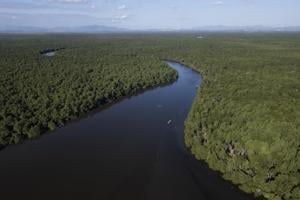RIO DE JANEIRO (AP) — At the rear of Rio de Janeiro’s polluted Guanabara Bay, thousands of mangroves rise as tall as 13 feet (about 4 meters) from a previously deforested area. The 30,000 trees, planted by non-profit organization Instituto Mar Urbano over four years in the Guapimirim environmental protection area, stand as an example for cities seeking natural means to improve climate resilience. Such ecosystems are vital for protection against floods that have become increasingly frequent around the world.
from a devastating flood earlier this month that , with waters far from subsiding to normal levels. Mangroves slow sea water’s advance into riverbeds during storm surges by soaking it up, and protects the land by stabilizing soil that otherwise could be washed away. They also act as a carbon sink.

The reforestation in Rio’s bay improved the cleanliness of water that’s a breeding ground for marine species. Crabs have returned, providing extra income for the local crab pickers who helped plant the trees. “To plant a tree in this mangrove is an act of environmental recovery and also an act in the fight against climate change,” Ricardo Gomes, a director at the non-profit, told The Associated Press on Thursday.
“Today we can be sad, because of all that has been lost (in Brazil’s South), all that was destroyed. But we never had so much knowledge, so much technology and resources to recover our environment.” A lack of mangroves wasn’t the cause of flooding a.























